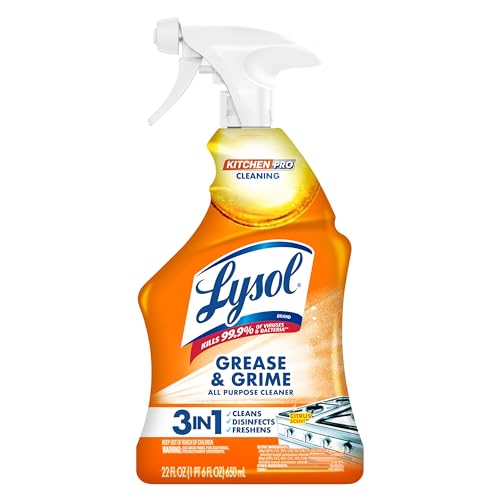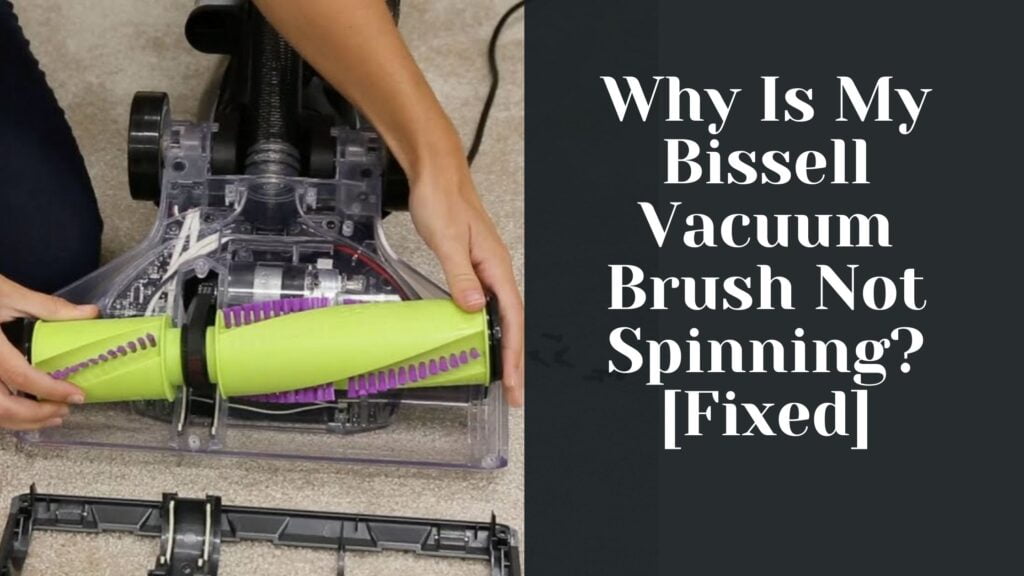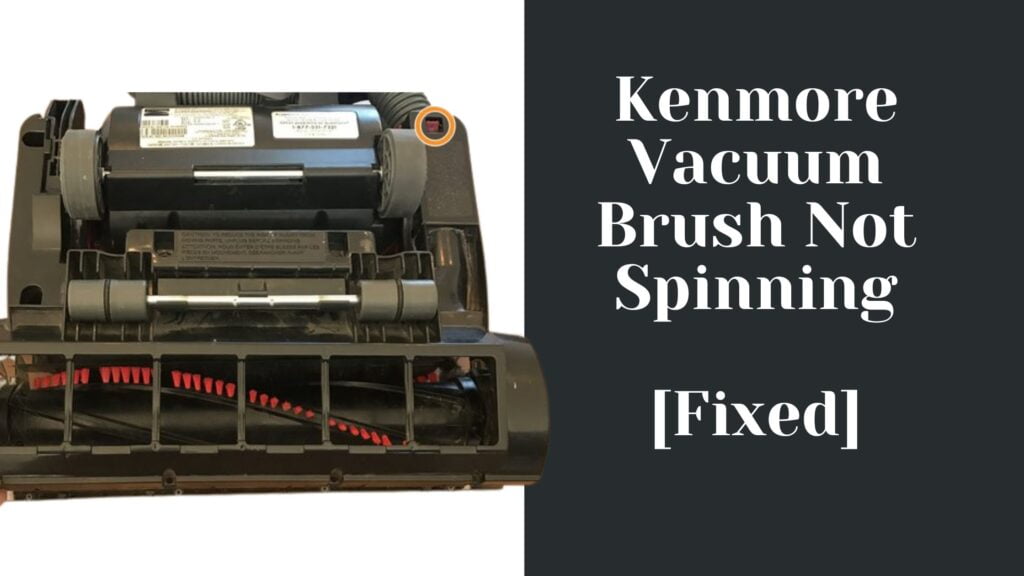When your Shark vacuum stops sucking up dirt into the canister, it’s more than just a minor inconvenience. It’s a sign that something may be amiss with your trusty cleaning companion. The problem could stem from various issues, some more serious than others. But don’t worry – you’re not alone in this predicament.
Most likely, the issue lies within blockages or filters within the system of your device. Perhaps there’s an obstruction in the hose or maybe the filters are caked with dust and need a good clean or even replacement. Another cause could be that your vacuum’s canister is full to capacity – if so, it won’t pick up any additional debris until you empty it.
By understanding what might be going wrong with your Shark vacuum, you can take steps to troubleshoot these problems yourself before resorting to professional repair services.
Understanding Your Shark Vacuum
Your Shark vacuum is a powerhouse when it comes to keeping your spaces squeaky clean. But what happens when dirt isn’t going into the canister as it should? To tackle this, you first need to understand how your machine works.
Shark vacuums are built to provide optimal cleaning efficiency through their advanced technology and design. They’re equipped with powerful motors that generate strong suction power. This power pulls up dirt, dust, and debris from your floors or carpets. The sucked in particles then travel through the vacuum’s hose and end up in the canister.
In standard conditions, you’ll experience seamless cleaning with your Shark vacuum. However, certain issues like blockages in the hose or problems at the canister might prevent dirt from reaching its intended destination.
Blockages usually occur due to large debris getting stuck in the hose or smaller particles clumping together over time. On the other hand, problems at the canister could stem from improper installation or a full container that needs emptying.
A quick inspection of these parts may provide an insight into why your vacuum isn’t functioning as expected:
- The Hose: Check for visible obstructions inside.
- Canister: Ensure it’s not full and correctly inserted.
- Filters: Make sure they are clean and properly positioned.
By understanding how each component of your Shark vacuum plays a role in successful operation, you’ll be more equipped to troubleshoot any problems that arise. Implementing regular maintenance checks will also help keep potential issues at bay!
Common Issues with Shark Vacuum Dirt Collection
Every now and then, your Shark vacuum might give you a hard time. It’s frustrating, we know. One of the prevalent issues you may encounter is dirt not going into the canister as it should. Below are some common problems that could be behind this.
One culprit could be a blocked airway. If there’s something obstructing airflow in the vacuum, it won’t pick up dirt properly. This could range from large debris in the cleaning path to tangled hair wrapped around the brush roll.
Another issue might be an overfilled or incorrectly installed dust cup. Your Shark vacuum isn’t designed to work efficiently when its dust cup is crammed full of grime and dust bunnies. Emptying it regularly ensures optimal performance. Furthermore, if it’s not secured properly after emptying, this can also lead to poor suction and ineffective dirt collection.
Perhaps your filters need attention too? Dirty or clogged filters drastically reduce your vacuum’s ability to collect and contain dirt within the canister. Regularly cleaning or replacing these components will keep your machine running smoothly.
Let’s not forget about suction settings either! If they’re set too low for the surface you’re cleaning, your vacuum won’t pick up much at all – let alone deposit what it does pick up into its canister.
Lastly, consider checking for any damage to parts like hoses or seals which might affect airflow and overall device operation.
Remember – regular maintenance goes a long way keeping these issues at bay and ensuring effective dirt collection by your Shark vacuum cleaner.
Why Isn’t the Dirt Going Into the Canister?
Ever wondered why your Shark vacuum isn’t sucking up dirt into its canister like it should? You’re not alone. There could be several reasons for this frustrating issue. Let’s dive right into some of the most common culprits.
First, there’s a possibility that your vacuum’s filters are dirty or clogged. Believe it or not, something as simple as a dirty filter could prevent the dirt from going into the canister. When was the last time you cleaned out or replaced your vacuum filters? If you’re scratching your head trying to remember, chances are they’re overdue for a cleaning.
Next on our list is blockages in your vacuum’s hose or brush roll. It’s possible that large debris has gotten lodged somewhere along these parts and is preventing smaller particles from being sucked up properly. This is certainly an inconvenience but don’t worry – it’s usually an easy fix! Simply disconnect and inspect these components for any visible blockages.
Another potential reason could be damage to the vacuum itself – particularly, cracks in the hose or canister which might be allowing air (and thus, dirt) to escape before reaching the intended destination. These damages aren’t always obvious so take a good look at your machine if you suspect this might be causing issues.
Finally, it’s worth checking if your vacuum bag (if applicable) or dust cup is full. Sometimes we overlook such basic things when troubleshooting problems with our appliances! If there’s no space left in these compartments for more dirt, then naturally nothing else will get sucked up until they’re emptied.
Remember that regular maintenance and periodic checks on all parts of your Shark vacuum cleaner can help prevent such issues from arising in future.
Examining Your Shark Vacuum’s Components
Let’s dive right into the core of your Shark vacuum. It’s a complex machine with various components working in harmony to ensure maximum cleaning efficiency. Sometimes, however, things go wrong and dirt doesn’t make its way into the canister as it should.
Your vacuum’s key components include the hose, filter system, brush roll, and motor. If you’re facing issues with dirt collection, chances are there might be a problem with one of these elements.
- The Hose: This is your vacuum’s pathway for dirt from your floor to the canister. Blockages here are common culprits when it comes to poor suction or incomplete dirt transfer.
- Filter System: A clogged or dirty filter can significantly hamper your vacuum’s performance, preventing dust and debris from reaching the canister.
- Brush Roll: The brush roll loosens up dirt so that it can be sucked up by the vacuum cleaner. If it isn’t spinning properly or if tangled hair and fibers inhibit its movement, this could mean less dirt making its way to the bin.
- Motor: Lastly but crucially is your vacuum’s motor – an underperforming motor isn’t going to provide enough suction power for effective cleaning.
To get down to what might be causing issues with your Shark Vacuum not collecting dirt efficiently, start by examining these components one after another for any visible signs of damage or blockage.
While checking each component individually may seem like a daunting task at first glance, remember: patience is key when troubleshooting appliances! You’ll likely discover that taking some time now will save you plenty more in future frustrations – not to mention potential repair costs! So get comfortable as we guide you through each step in upcoming sections of this article.
Cleaning and Maintaining Your Shark Vacuum Properly
Let’s dive into the essentials of cleaning and maintaining your Shark vacuum. It’s not rocket science, but it does require some attention to detail.
First thing’s first, always disconnect your vacuum from the power source before starting any cleanup process. You’ll want to avoid any unwelcome shocks or accidents.
Now, onto the canister. If you’re noticing that dirt isn’t being sucked up into the canister, your filter may be blocked. A dirty filter is often a leading cause of this problem. Here’s what you need to do:
- Remove the filter: Your user manual will have instructions on how to do this.
- Clean it properly: Rinse under warm water until it runs clear.
- Dry completely: Leave it out for at least 24 hours to ensure no moisture remains.
However, don’t forget about the rest of your vacuum! The brush roll should also be cleaned regularly – hair and other debris could wrap around it over time, impacting its performance.
Another critical aspect is checking for blockages in hoses or attachments frequently. Even a small piece of debris lodged in the wrong place can impact suction strength significantly!
Remember these tips:
- Regular maintenance extends life
- Check filters monthly and change annually (or as needed)
- Keep an eye on hoses and attachments
- Don’t neglect cleaning brush rolls
- Use only manufacturer-recommended replacement parts
Sticking with these guidelines will help keep your Shark vacuum performing at its best for years to come!
Troubleshooting Steps for Unresponsive Shark Vacuums
So, you’ve noticed your Shark vacuum isn’t picking up dirt like it used to. Don’t worry—you’re not alone. Many users encounter this issue but solving it might be easier than you think.
First things first, always start by checking the basics. Is your vacuum plugged in and switched on? Sounds simple but sometimes the problem is as basic as that. If power isn’t an issue, move on to inspecting the canister. An overly full canister could be preventing any more dirt from being sucked up.
Next, take a closer look at the filters within your vacuum cleaner—they’re crucial in maintaining suction efficiency. A clogged filter could very well be why your machine’s performance has taken a hit. Most Shark vacuums have washable filters; cleaning them regularly helps maintain optimal performance.
Here are some steps:
- Remove and empty the dust cup
- Take out the filters—there’s usually one pre-motor and one post-motor filter
- Rinse them under warm water until it runs clear (do NOT use soap)
- Let them air dry for at least 24 hours before placing back into the unit
Still no luck? Don’t lose hope yet! It’s time to inspect hoses and attachments for blockages—debris stuck here can prevent efficient airflow which in turn affects dirt pick-up.
Lastly, check out the brush roll underneath your vacuum cleaner—it should spin freely when switched on. Hair or string tangled around this part may be hindering its movement leading to less effective cleaning.
Remember: regular maintenance of these components will extend their lifespan and ensure that you get maximum functionality from your device!
Professional Solutions and When to Seek Help
Sometimes, despite your best efforts, you may find that your Shark vacuum still isn’t performing as it should. In these instances, it’s time to consider professional solutions.
One option is seeking help from a certified Shark technician. You’ll find them well-versed in all things Shark vacuums, and they can often diagnose problems quickly and accurately. This could mean the difference between a minor repair or part replacement and having to buy an entirely new vacuum.
Another route is reaching out to the customer service department of Shark. Their team can guide you through troubleshooting steps that might not be included in the manual or online guides. They’re also able to authorize repairs or replacements under warranty if necessary. Take advantage of this line of support; after all, nobody knows their product better than they do!
You could also consider taking your device to a local appliance repair shop. While they might not specialize in Shark products, many have extensive experience with a wide range of brands and models.
Lastly, it’s important not just for your vacuum but for any home appliance – don’t push beyond limits if you’re uncomfortable handling certain parts or fear causing further damage. Instead, enlist professional assistance right away.
Remember: dealing with technical issues can be frustrating but knowing when to seek help makes the process less daunting.
Conclusion: Keeping Your Shark Vacuum in Top Shape
Making sure your Shark vacuum doesn’t lose its performance over time is no small feat. But it’s not an impossible task either. Regular maintenance and troubleshooting can keep your device functioning at its best, ensuring that dirt goes where it’s supposed to – into the canister.
Your first line of defense is always regular cleaning. It might seem like a chore, but keeping the filters and brush rolls free from debris will help maintain suction power. Don’t forget to check these parts for wear and tear too – if they’re not in their best shape, you might need to replace them.
Next up is checking for clogs. And this isn’t just about peering down the hose or into the canister; be thorough! Check the entire pathway from the brush roll to the dust cup for any obstructions that could be preventing dirt from being sucked up properly.
Lastly, remember that sometimes things go wrong which aren’t your fault. If everything seems fine but your vacuum still isn’t performing as expected, don’t hesitate to reach out to Shark Customer Service – they’ll be able to guide you through more complex issues or arrange repairs if needed.
To sum it up:
- Clean regularly
- Check for clogs
- Reach out for professional help when necessary
These are simple steps you can take towards prolonging the life of your trusty cleaning companion. After all, taking care of your Shark vacuum means it’ll take good care of your home in return.



















